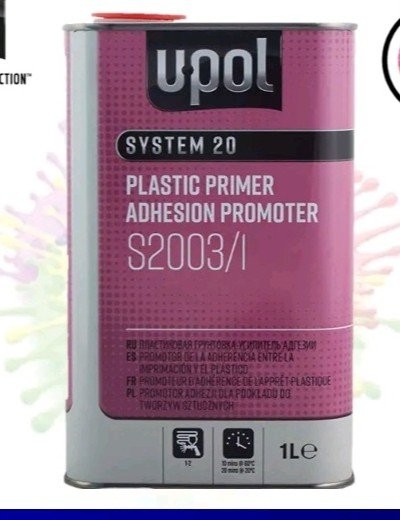Painting plastic car parts can refresh the look of your vehicle, but it requires the right approach, especially when it comes to primer. Many DIYers and even experienced auto body professionals often wonder about the necessity of a special primer for plastic components like door handles, mirrors, trims, and bumpers. This guide will delve into the best primer options for plastic car parts, helping you achieve a durable and professional finish.
When preparing to paint plastic car parts, surface preparation is paramount. Unlike metal, plastic surfaces can be more challenging to paint due to their flexibility and non-porous nature. Proper adhesion is crucial to prevent paint from peeling, cracking, or flaking over time. This is where primer plays a vital role. Primer acts as an intermediary layer between the plastic and the top coat of paint, creating a uniform surface and enhancing paint adhesion.
Traditionally, “plastic primer” has been the go-to solution for painting plastic car parts. These specialized primers are designed to create a flexible and bonding layer on plastic surfaces. They often contain solvents that slightly etch or soften the plastic surface, promoting better mechanical adhesion for subsequent layers of primer and paint. Plastic primers are typically easy to apply, often available in aerosol cans, making them convenient for DIY projects.
However, the automotive paint industry has evolved, and epoxy primers have emerged as a robust alternative, even for plastic. Epoxy primers are known for their exceptional adhesion properties, corrosion resistance, and durability. They create a strong, waterproof barrier and offer excellent adhesion to a wide range of substrates, including various types of plastic used in car parts. Some experts argue that high-quality epoxy primer can eliminate the need for a separate plastic primer altogether, simplifying the painting process and potentially offering superior results.
The debate between using dedicated plastic primer versus epoxy primer often comes down to the specific type of plastic, the desired level of durability, and personal preference. For rigid plastics commonly found in door handles and mirror housings, both plastic primers and epoxy primers can be effective. However, for flexible plastic parts like bumpers, the flexibility and adhesion properties of epoxy primer might offer a longer-lasting solution, especially in preventing cracking from impacts or temperature changes.
To ensure the best results, regardless of the primer you choose, meticulous surface preparation is essential. Start by thoroughly cleaning the plastic parts with a degreaser to remove any dirt, grease, wax, or mold release agents that can hinder paint adhesion. For bare plastic, a thorough cleaning is even more critical. After cleaning, lightly scuff the surface with a red Scotch-Brite pad or fine-grit sandpaper (e.g., 320-grit) to create aProfile for mechanical adhesion. Avoid aggressive sanding, as it can create deep scratches in the plastic.
When applying plastic primer, follow the manufacturer’s instructions carefully. Typically, thin, even coats are recommended to avoid pooling or runs. Some plastic primers can react negatively if applied too heavily, potentially causing wrinkling or lifting. For epoxy primers, mixing ratios and application techniques are crucial for optimal performance. Ensure you use a compatible hardener and follow the recommended induction time and pot life.
After the primer has fully cured, you can proceed with applying a high-build primer if necessary to fill any minor imperfections and create a perfectly smooth surface for the top coat. Once the high-build primer is sanded smooth, the plastic car parts are ready for painting with your chosen color and clear coat.
In conclusion, while dedicated plastic primers are formulated for plastic adhesion and offer a convenient option, high-quality epoxy primers present a versatile and potentially superior alternative for priming plastic car parts. The “best” primer ultimately depends on the specific application, the type of plastic, and your desired outcome. Whether you opt for a specialized plastic primer or a robust epoxy primer, remember that thorough surface preparation and proper application techniques are the cornerstones of a successful and long-lasting paint job on plastic car components.
